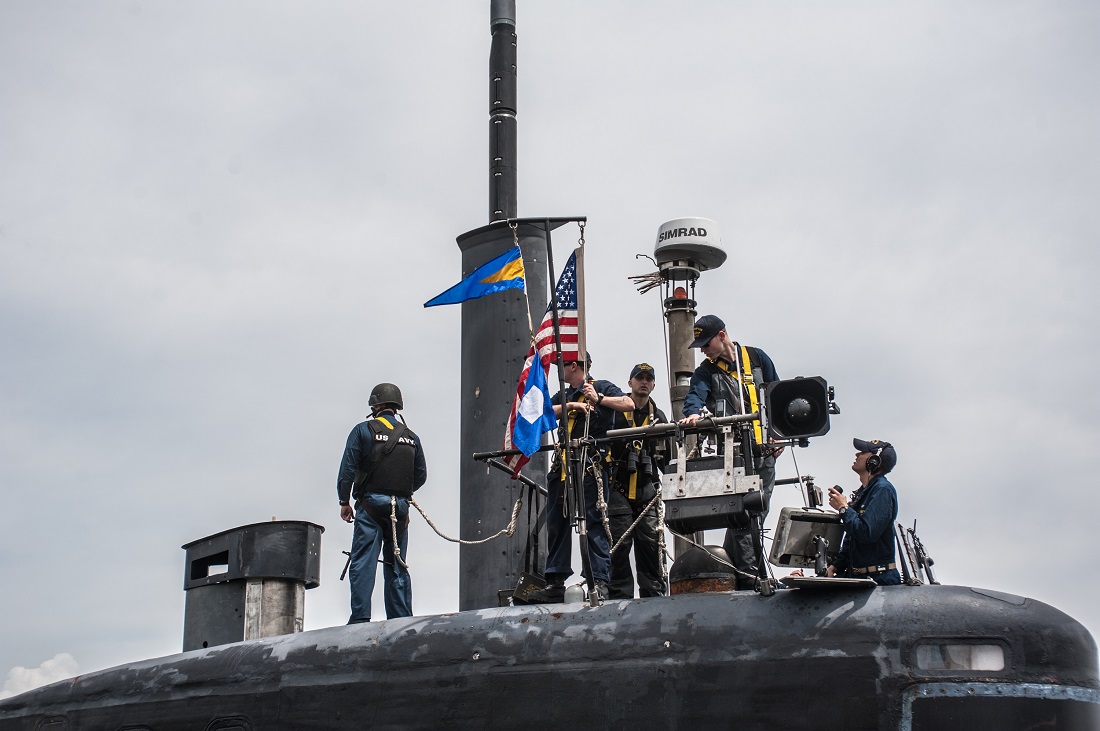Submarines and the Law of Espionage
It has been apparent for several years that the navies in the Asia-Pacific are on the greatest submarine development and acquisition spree since before World War II. Most states that operate submarines plan to expand their force, including Japan from 16 to 22 boats; Australia from 8 to 12, and China, from about 60 now to more than 70 by 2020.

Published by The Lawfare Institute
in Cooperation With

It has been apparent for several years that the navies in the Asia-Pacific are on the greatest submarine development and acquisition spree since before World War II. Most states that operate submarines plan to expand their force, including Japan from 16 to 22 boats; Australia from 8 to 12, and China, from about 60 now to more than 70 by 2020. Malaysia, Indonesia, Vietnam, and even Thailand, are intent on deploying submarines. In 2014, China operated a submarine in the Indian Ocean for the first time and in 2015 began nuclear ballistic missile submarine patrols. In short, submarine growth in Asia is both vertical – increasing technology, sophistication, and capabilities — and horizontal, spreading among states and expanding operating areas.
The legal implications of these changes in the strategic and operational maritime environment concern appropriate and lawful employment of submarines to gather intelligence, as well as the rights of coastal states to impede espionage against them conducted from the sea. Given the increase in submarine activity in the region, combined with rather testy and contending visions of maritime rights, we may expect that things easily could get out of hand. Indeed, many have forgotten that in 2010 North Korea sent a South Korean frigate to the bottom of the Yellow Sea, so it bears thinking about the legal relationship between states operating submarines in the coastal zone: is it lawful to conduct submarine espionage in the territorial sea, and if not, what recourse has the coastal state to stop the activity? My recent piece, “Putting Your Head in the Tiger’s Mouth: Submarine Espionage in Territorial Waters,” in the Columbia Journal of Transnational Law, tackles these issues.
The article begins with the ample history of such incidents over the past sixty-five years involving Chinese, British, North Korean, American, and Soviet (and Russian) submarines, suggesting that while undersea spying occurs with some regularity, the political and legal consequences are uncertain. As submarines enter the force structure of East Asian navies for the first time we can expect that states in the region will face these issues for the first time. While submarine intrusions into the territorial sea are not uncommon, the legal standards that govern such operations and the rights and duties of affected coastal states are murky.
Although it is apparent that submarine espionage violates the sovereignty of the coastal state in the territorial sea, it is unclear whether the operations are inconsistent with the law of the sea, or even international law more generally. Certainly undersea operations and spying in territorial waters without coastal state consent are not compatible with the regime of innocent passage in the law of the sea, but it is unclear whether they are lawful as “non-innocent” passage.
Even if the affected coastal state has suffered a violation of its sovereignty, there is disagreement over lawful coastal state responses or countermeasures. Although the law of the sea recognizes coastal state prescriptive jurisdiction over vessels not in innocent passage in order to “require” them to leave the territorial sea, the authority to enforce such measures — especially against warships with sovereign immune status — is unresolved. Third, it is doubtful whether states may take recourse to forceful action or invoke the doctrine of self-defense against submarine intrusions, even though several states appear to have done so.
These issues have particular salience in the Asia-Pacific region, where regional states are invested in development and expansion of submarine fleets. Sophisticated undersea technologies are entering service in states situated along an arc that stretches from the Persian Gulf and Indian Ocean in the west to Southeast Asia and Northeast Asia in the east. Many of these states, such as those surrounding the South China Sea, are engaged in fierce maritime disputes. The lack of consensus concerning the legal standards of submarine espionage, combined with a lack of operational naval acumen and simmering maritime rivalries, raises the risks of conflict.
The article presents a roadmap of legal issues associated with submarine espionage in the territorial sea, and the conclusions will tend to generate greater confidence, predictability, and stability at sea. While submarine espionage does not appear to be inconsistent with the law of the sea, espionage in the territorial sea is injurious to the sovereignty of the coastal state. In response to such incursions, coastal states may, without impinging on their sovereign immune status, require submarines to leave the territorial sea. The use of force in self-defense, however, may not be invoked by the coastal state to compel compliance since the undersea incursion lacks the “gravity” or “effect” of a conventional armed attack, as set forth in the U.S. v. Nicaragua Case.





